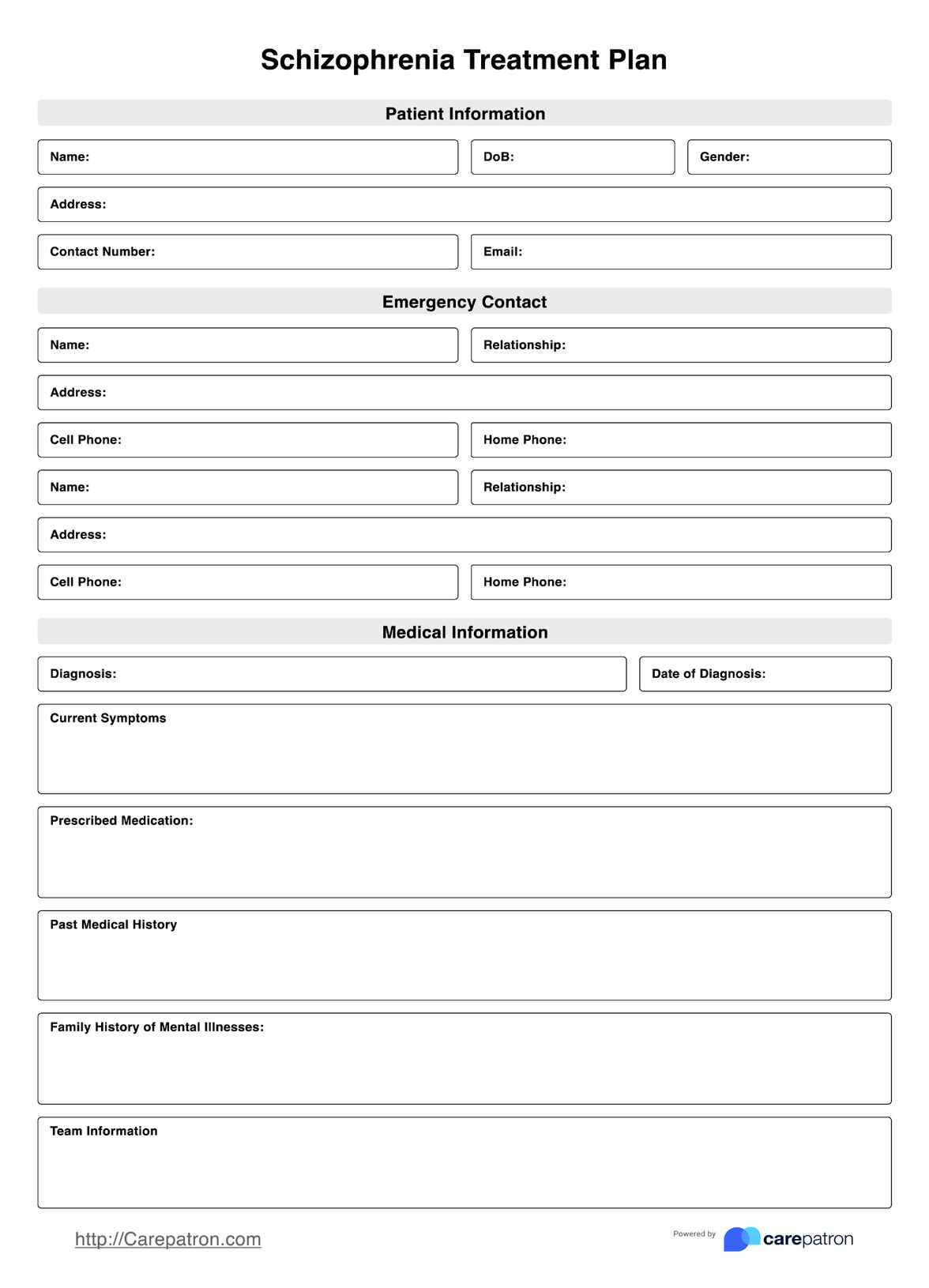The plan includes antipsychotic medications (often second-generation antipsychotics) for positive symptoms, psychological therapies like cognitive behavioural therapy, psychosocial therapy, and cognitive enhancement therapy for cognitive symptoms, and lifestyle adjustments to address proper nutrition and exercise. It also involves family therapy, support groups, and regular monitoring by a healthcare team.

Schizophrenia Treatment Plan
Looking to create a Schizophrenia Treatment Plan for your patient? Check this guide to see how one would generally look to help provide you with structure when you’re making a plan for your patient!
Schizophrenia Treatment Plan Template
Commonly asked questions
Family therapy educates family members about schizophrenia, develops coping strategies, and enhances support for the patient. It improves family communication, reduces stress, and creates a supportive home environment.
The goals are to manage symptoms, prevent relapses, improve quality of life, reduce positive symptoms like delusions, manage negative symptoms, enhance cognitive function, and support personal goals such as employment and social relationships. Education and long-term management for the patient and their support network are also key.
EHR and practice management software
Get started for free
*No credit card required
Free
$0/usd
Unlimited clients
Telehealth
1GB of storage
Client portal text
Automated billing and online payments











